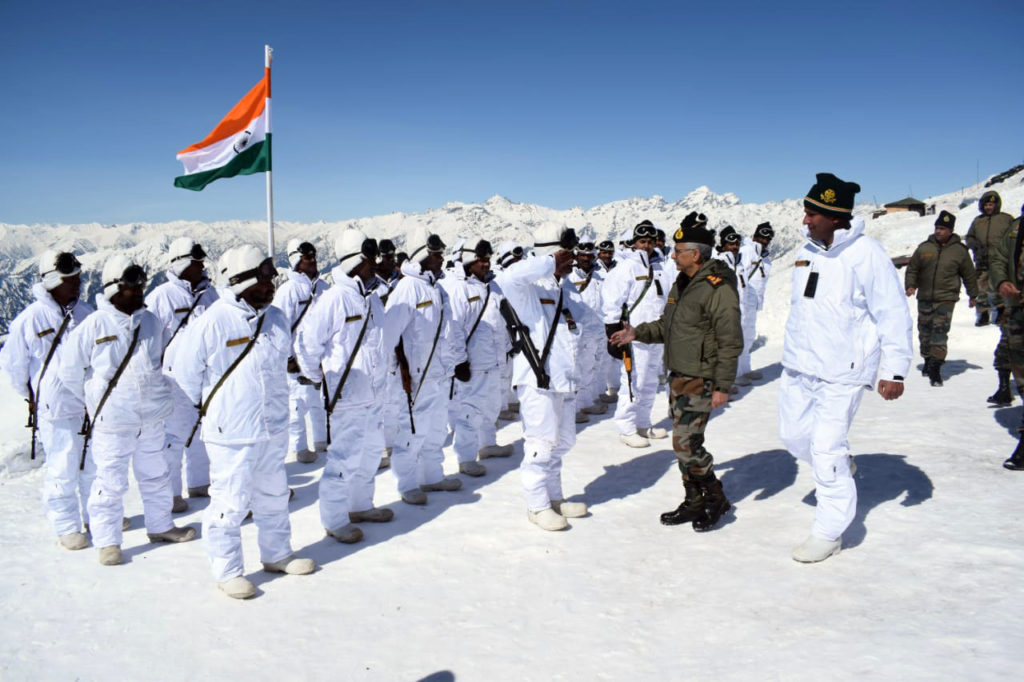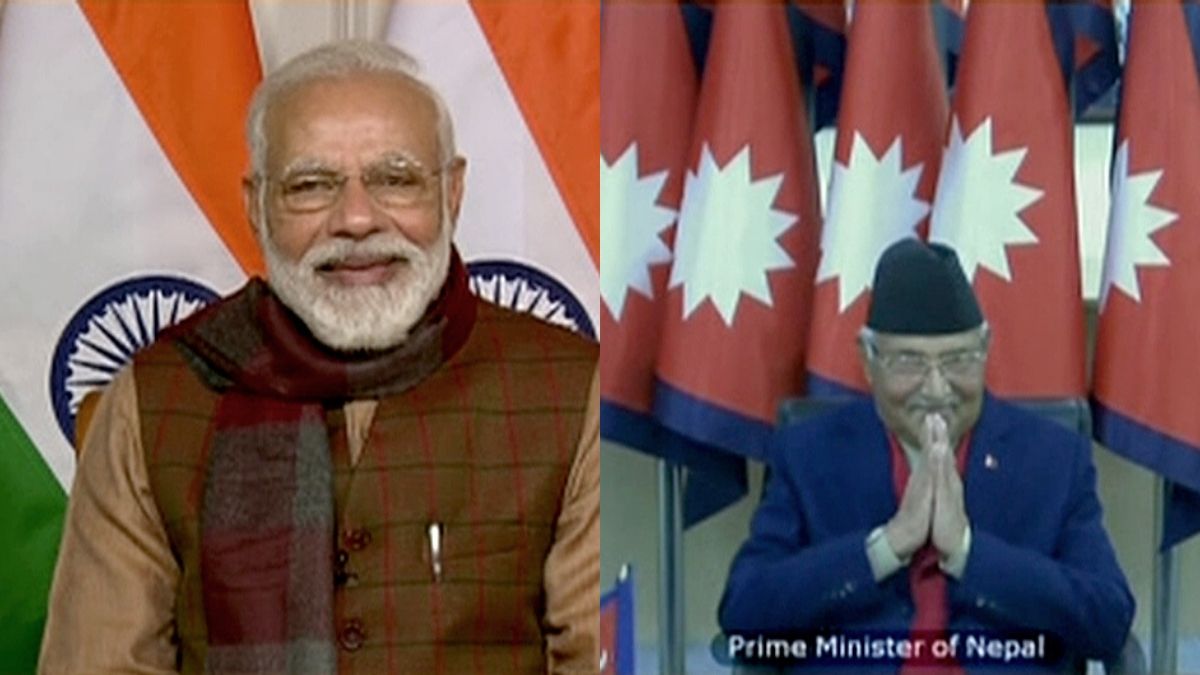Answering queries from guests during a question-and-answer session at the end of a webinar organised by the Manohar Parrikar Institute of Defence and Strategic Analysis on 15 May, Army Chief M.M. Naravane discussed objections by Nepal on the Dharchula-Lipulekh road. He stated that there was no reason for a controversy since the road was well within Indian territory and had been discussed with the Nepalese side.
He further added that the timing of the aggressive claim was not without a motive and that Nepal was acting at “someone else’s” behest. Nepal’s objections to the road, post its inauguration on 8 May and the commencement of the standoff in Ladakh were near simultaneous. The Chinese objection in Ladakh was also the construction of a bridge over the Galwan rivulet.
The bridge, once complete, would give India easy access to Daulat Beg Oldie, the last Indian post south of the Karakoram Pass. Nepal’s initial claims were rejected by the Indian government with a statement, “India is committed to resolving outstanding boundary issues through diplomatic dialogue and in the spirit of our close and friendly bilateral relations with Nepal.” While India and Nepal do have boundary disputes, the road is well within Indian territory. The current road follows the alignment of the track taken by pilgrims moving for the Kailash Mansarovar yatra, ending at Lipulekh, which is also a bilateral trade route between India and China, based on an agreement of 2015.


Nepal had objected to this agreement being signed without Nepal’s consent. Post objections being raised by Nepal on 8 May, the Indian government stated, “The road follows the pre-existing route used by the pilgrims of the Kailash Mansarovar Yatra. Under the present project, the same road has been made pliable for the ease and convenience of pilgrims, locals and traders.” The cartographic issue had begun simmering since India released new maps in November 2019, post creating the two Union Territories of Ladakh and Jammu and Kashmir in August.
The map remains the same as before but since it was issued afresh, Nepal objected. New Delhi stated it was open to talks once the coronavirus lockdown is eased. But Kathmandu wanted the talks to be held as early as possible. The reason for rise in temperatures within Nepal is its tense internal political climate. Current PM K.P. Sharma Oli is facing internal criticism for multiple failures including corruption, governance and inability to handle the pandemic.
His government was saved from imminent collapse by timely intervention of the Chinese Ambassador and a phone call by the Chinese President Xi Jinping. Oli needed an opportunity to enhance national spirit while diverting public attention. This was the opportunity and hence he had a new map drafted which included regions, beyond the current dispute, into Nepalese areas and even considered amending the constitution to adopt this map.
The attempt to amend the constitution is currently ongoing. To further divert attention from his failings, Oli went as far as blaming his own detractors working alongside India to push in Covid-affected persons into the country. He stated, “Those who are coming from India through illegal channels are spreading the virus in the country and some local representatives and party leaders are responsible for bringing in people from India without proper testing.”
It was around this time that the Indian army chief made his comments. As per the Kathmandu Times of 15 May, the statement of the Indian army chief was made, “hours after Nepalese Foreign Secretary, Shanker Das Bairagi, held a meeting with Chinese Ambassador, Hou Yanqi, in Kathmandu regarding the boundary row with India over Lipulekh”. Thus, China was directly or indirectly involved in the raising of Nepal’s protests.
This statement was initially exploited not in Nepal but within India by a columnist and political commentator, who claims to have served in a quasi-military organisation as also runs a website on defence issues. His piece in an online journal was aimed at sowing discontent within the Indian Army’s Gurkha Units, a large part of whose manpower flows from Nepal. He even sought to the army chief’s simple statement a political overtone. He wrote, “No soldier, in India or in Nepal, believes that General Naravane’s inconsiderate remarks have not been instigated by someone within the Narendra Modi government.”
He added, “This incomparable time-tested bond has been placed under a strain by an utterance that is both avoidable and unmilitary.” The writer’s own understanding of India-Nepal military relations as also of the structure and cohesion within the Indian army appears to be extremely shallow. Apart from the two Army Chiefs being honorary chiefs of the other army, the Indian Army supports the Nepalese Army in training and equipment. Nepal Army officers attend Indian Army training courses.
Their current army chief, General Purna Chandra Thapa has himself done the Defence Services Staff College and the National Defence College courses in India. The Indian Army also pays pension to 1,25,000 retired Gorkha soldiers and civilian personnel. The strength of Indian army officers in the Indian embassy in Nepal is the highest army presence in an embassy anywhere in the globe, as they are responsible for the welfare and wellbeing of the Gurkha veterans. Indian army veteran Gurkha Officers criticised the comments.
Bhim Bahadur Shahi, a third generation Gurkha Officer, wrote in the Eastern Link that the author by his comments, “dishonours and disrespects the entire community of the Gorkha Rifles, serving and retired, in India and Nepal”. He added, “Politics does not affect the Gorkha soldier in the Indian army because he is here for soldiering, not for politics.” However, these comments were exploited by political elements within Nepal.
The Nepalese defence minister, Ishwor Pokhrel, also spoke on similar lines. The Nepal army refused to be drawn into the controversy. The office of the Nepali army spokesperson refused to comment stating that the army was not entitled to comment on “opinions” of the Defence Minister. Nepal is now seeking talks at the foreign secretary’s level to resolve the issue. India turned down the offer demanding that Nepal first creates “an environment of trust and confidence”. The statement added, “Even in these challenging times of Covid-19, India has ensured unimpeded trade and supply of essentials including medicines to Nepal.”
Nepal’s intention is to keep the subject boiling for political purposes. Recent reports indicate that the Nepalese government is planning to launch a social media campaign within the country to create an anti-India sentiment. This is aimed to enhance the standing of the Oli government and reduce criticism on its failings, by projecting the strong stance it has taken. Stalemate on the case continues. It is advisable that the case be handled at the level of the MEA, rather than novices jumping in to vitiate the environment.
Maj Gen Harsha Kakar (Retd) has held a variety of appointments in every part of the country including J&K and the Northeast until he retired from Indian Army in 2015. During his service he was also the head of the department in strategic studies at the College of Defence Management, where he wrote extensively on futuristic planning and enhancing joint operations. He has also served as part of the United Nations Peacekeeping operations in Mozambique.









